Israel-Hamas War: What happened on day 72?
IDF exposes massive tunnel system in Gaza built by Sinwar's brother • No further hostage talks until Israel ceases aggression, Hamas official says
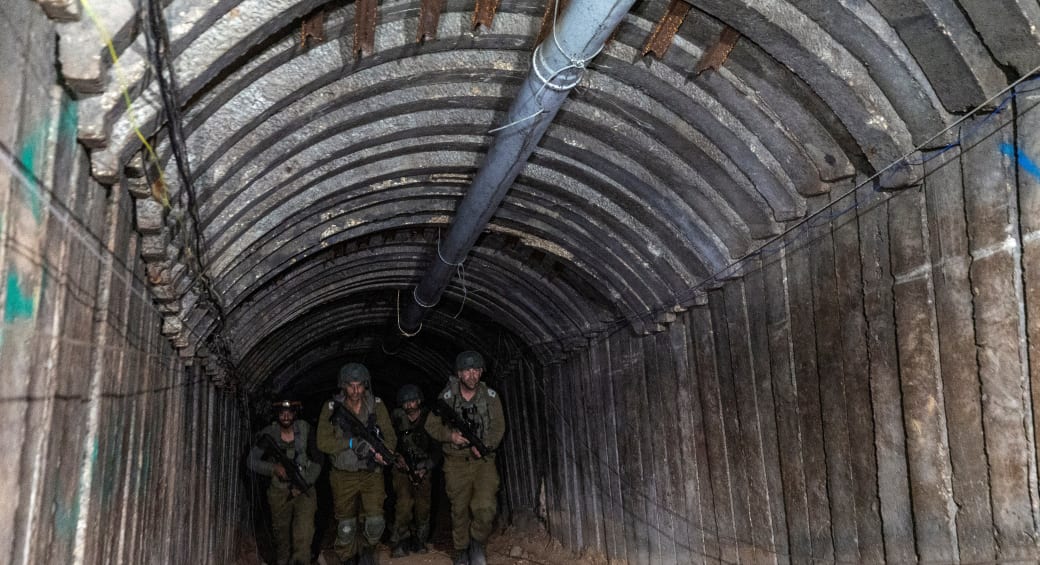

IDF finds killed Gaza hostages' SOS sign, chief says incident was avoidable
After the incident, IDF troops discovered the hostages had written "help" and "SOS" in Hebrew and English inside the building in case they were found.

IDF Chief of Staff Herzi Halevi held a situational assessment on the ground in Gaza on Sunday during a visit to troops of the 99th Division.
Addressing the soldiers, Halevi referred to the accidental shooting on Friday of three Israeli hostages taken by Hamas, saying, "This was a very difficult and painful incident, but one that could very easily have not happened.
"We have set three goals: to dismantle Hamas, to restore security to the residents of the Gaza border area, and the third mission is to recover the hostages."
Yotam Haim, Alon Shamriz, and Samer Talalka were all killed by IDF soldiers who opened fire as the hostages approached them as they exited the building where they were kept hostages.
The three were stripped to the waist, with raised hands and waving a white flag. The hostages also shouted out "help" in Hebrew but were misidentified as a threat and shot. 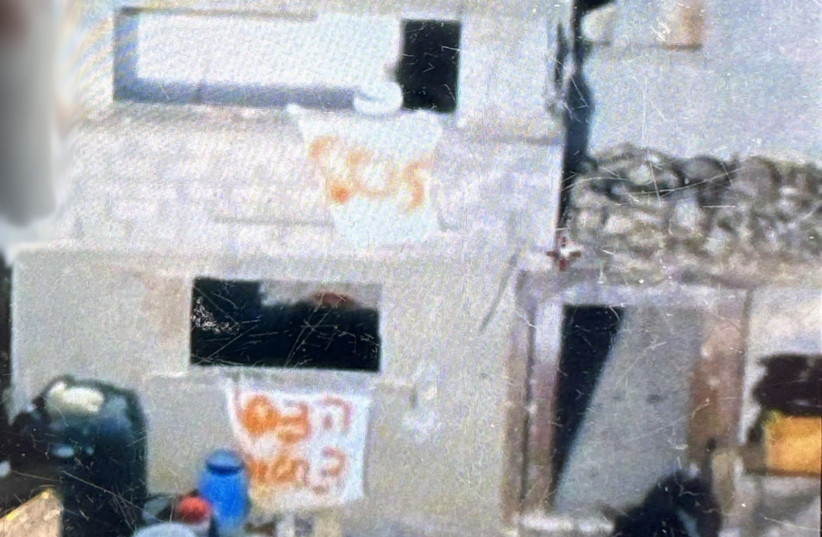
After the incident, IDF troops discovered the hostages had written "help" and "SOS" in Hebrew and English inside the building in case they were found.
"Three people walked out during this incident," Halevi said. "They took into account that they were taking a risk approaching IDF troops and, to reduce the risk, they really thought about [what to do.] They took off their shirts so that no one would think they had explosives, and they held a white cloth on a pole to identify themselves. They spoke in Hebrew. They called for help."
Go to the full article >>IDF frustrated with inability to locate Gaza hostages, Israeli sources say
The accidental shooting of three Israeli hostages caused 'great frustration' among the IDF, who are tirelessly working to locate the abductees despite ongoing risks, including the lives of soldiers.
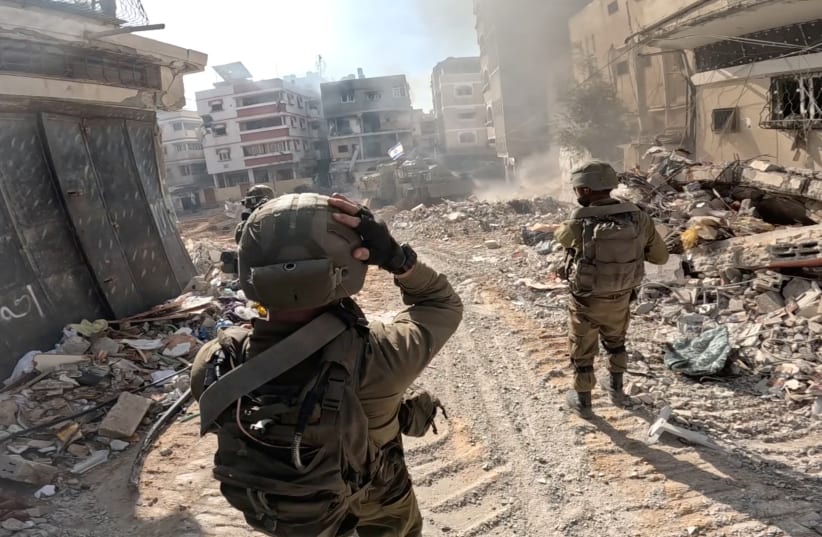
The first identified abductee by the IDF forces was Yotam Haim, likely recognized by his distinctive tattoos. Following their identification, the three were immediately examined in Israel, and news of this tragic event quickly surfaced.
The IDF clarified the battlefield's challenging and dense nature, highlighting ongoing extensive investigations and scans to locate the place where the abductees were held.
For reasons not fully clear, the IDF initially focused its efforts against Shejaia, one of the strongest Hamas battalions, known for its role in the October 7 massacre in the kibbutzim.
This approach contrasted the strategy employed during Operation Swords of Iron, where the Golani Brigade launched an immediate ground assault against this battalion, resulting in the loss of seven Golani fighters and the abduction of soldier Oron Shaul.
In the current operation, the maneuver into Shuja'iyya involved a 12-day rolling barrage of fire, followed by air and ground attacks aimed at dismantling two decades' worth of terror infrastructure.
The operation included extensive use of engineering equipment for clearing mines and explosive devices, as well as demolishing buildings posing threats to the forces. This was succeeded by Merkava tanks and Namer armored personnel carriers, with artillerymen conducting direct fire on terrorist homes.
Operational challenges of urban warfare
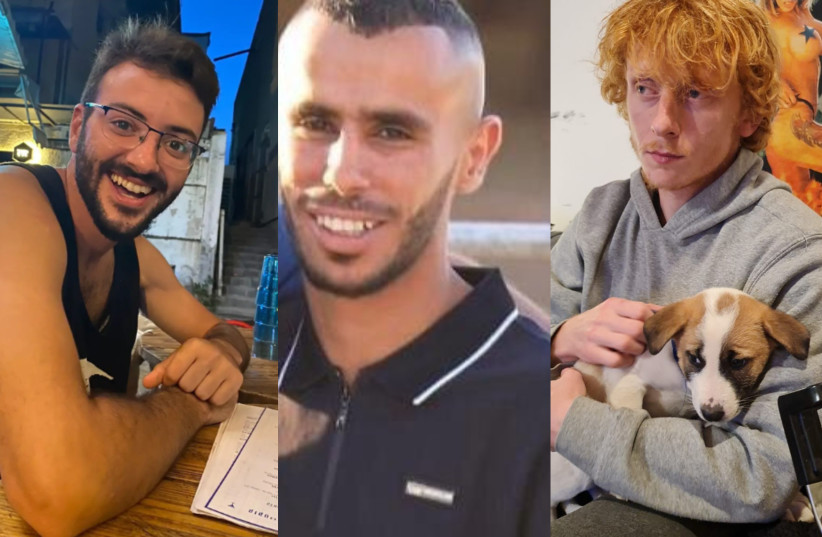
The initial phase of the combat was particularly challenging, with terrorists retreating and fortifying themselves in the dense neighborhoods. Nearly every third house was fortified with observation posts, sniper positions, mortar launchers, anti-tank missiles, command centers, and arms caches, all underpinned by a network of underground tunnels.
By Thursday of this week, the IDF had anticipated only a few more days of combat in the area. However, intense gun battles are still ongoing. The focus of the combat has been in the densely populated areas of the battalion, such as Kasbah, based on extensive intelligence from Military Intelligence and Shin Bet, targeting suspected buildings, pits, tunnels, and military sites.
Field commanders repeatedly emphasize, "Our collective dream is to find and safely return the abductees to Israel." This aspiration was marred by the tragic incident yesterday, where three abductees were mistakenly identified as terrorists and fatally shot, leading to significant frustration within the IDF.
The incident occurred around 10 am when IDF forces spotted three suspicious figures running towards them. After mistakenly identifying them as terrorists, the soldiers opened fire, resulting in their deaths. Subsequent scans raised suspicions that one of the deceased was Israeli.
Yotam Chaim was identified first, likely due to his tattoos. This led to a thorough investigation, during which all three bodies were examined in Israel, eventually identifying the other two abductees, Samar Fouad Talalka and Alon Shamriz.
The information was rapidly conveyed to the brigade commander and the Southern Command leader, who ordered an in-depth investigation to understand the incident's circumstances amidst recent frequent encounters in the area. The goal is to learn and adapt for future combat, aiming to prevent similar occurrences despite the complexity of urban warfare.
Currently, the IDF is trying to ascertain whether the three abductees managed to escape their captors during a moment of vulnerability, or if the terrorists were defending the site and were subsequently killed by IDF fire.
Security sources stressed that following the severe incident, the IDF initiated extensive searches to determine the location where the three were held. The aim is to extract vital details to shed light on the events, understand the captivity circumstances, and ascertain if there were other abductees.
IDF sources explained that the tragic event caused 'great frustration' among the forces, who are tirelessly working to locate the abductees despite ongoing risks, including to the lives of soldiers.
It was also noted that the incident, which concluded with the mistaken identification and subsequent death of the three abductees while fleeing their captors, likely attempted to reach a safe area and then the Israeli border.
Another military source highlighted the intensive intelligence collection following the abductees' location and status, involving input from the Shin Bet, Mossad, and Military Intelligence Directorate.
Retired Major General Nitzan Alon is leading the “brain war” against time and Hamas, spearheading special operations across the entire Gaza Strip to unravel the mystery surrounding the abductees’ whereabouts and fate.
Go to the full article >>USAID contractor killed in Gaza in November Israeli airstrike, employer says
In his final message, Jnena wrote: "My daughters are terrified, and I am trying to keep them calm, but this bombing is terrifying," according to the statement from his employer.

A contractor for the US Agency for International Development (USAID) in Gaza was killed with his wife and two daughters aged four and two in an Israeli airstrike in November, his employer said on Saturday.
"We are deeply saddened to confirm the tragic loss of our colleague, Hani Jnena (33), along with his family in Gaza, including his wife, Abeer (32), and their two young daughters, Mariam and Zayna, aged 4 and 2," non-profit organization Global Communities, which partners with governments and private sector entities for humanitarian work, said in a statement.
"Based on the information currently available to us, the young family was killed on Sunday, November 5, during an Israeli airstrike in the Al Sabra neighborhood of Gaza City at the residence of Hani's in-laws," the statement added.
The family had recently sought safety there after fleeing airstrikes in their own neighborhood of Al Sheikh in Gaza City, Global Communities said, adding his in-laws were killed as well.
In his final message, which was sent on Oct. 10, Jnena wrote: "My daughters are terrified, and I am trying to keep them calm, but this bombing is terrifying," according to the statement from his employer.
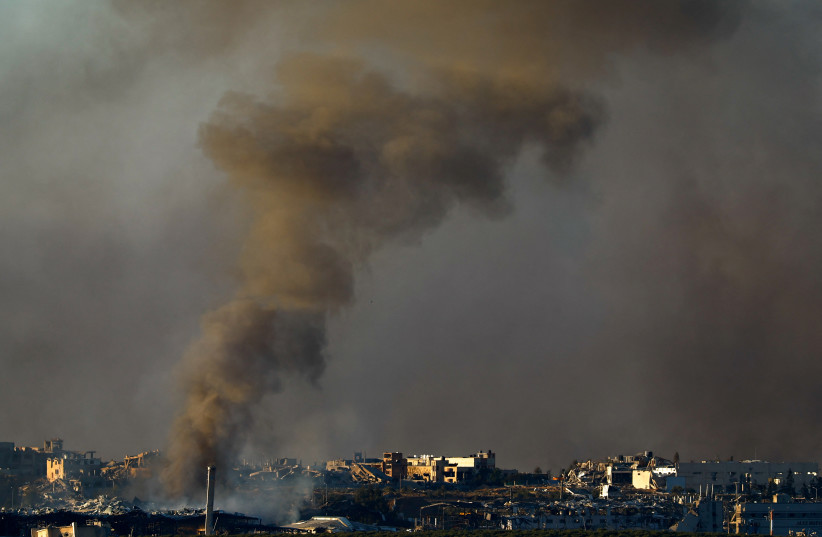
Jnena was a member of the non-profit's IT team in Gaza and was known for "his kindness and commitment to delivering essential IT services in challenging conditions," Global Communities said.
The latest eruption in the decades-long Israel-Palestinian conflict began on Oct. 7, when Hamas, the Palestinian terrorist group that rules Gaza, killed 1,200 Israelis and seized 240 hostages in a cross-border raid.
Since then, Israeli forces have besieged the coastal enclave and laid much of it to waste, with nearly 19,000 people dead, according to Hamas health officials.
Deaths in Gaza cause outrage
The Washington Post reported on Saturday that the USAID contractor's death led to calls from within USAID to the administration of President Joe Biden for accountability from Israel.
A USAID spokesperson told Reuters the USAID community "grieves the deaths of the innocent civilians and many humanitarian workers who have been killed in this conflict, including courageous individuals like Hani Jnena."
The spokesperson added the United States is raising concern with Israel in "every conversation" about the need for humanitarian workers to safely distribute assistance and for civilians to be able to access it.
In a statement to the Washington Post, the IDF did not confirm or deny Israel's responsibility in Jnena's death but said the IDF always follows international law and takes "feasible precautions to mitigate civilian harm."
Go to the full article >>IDF arrests 90 Hamas terrorists in Gaza hospital operation
Within the hospital, the Shin Bet took field investigators and interrogated employees who admitted that there were weapons hidden in the baby ward inside incubators
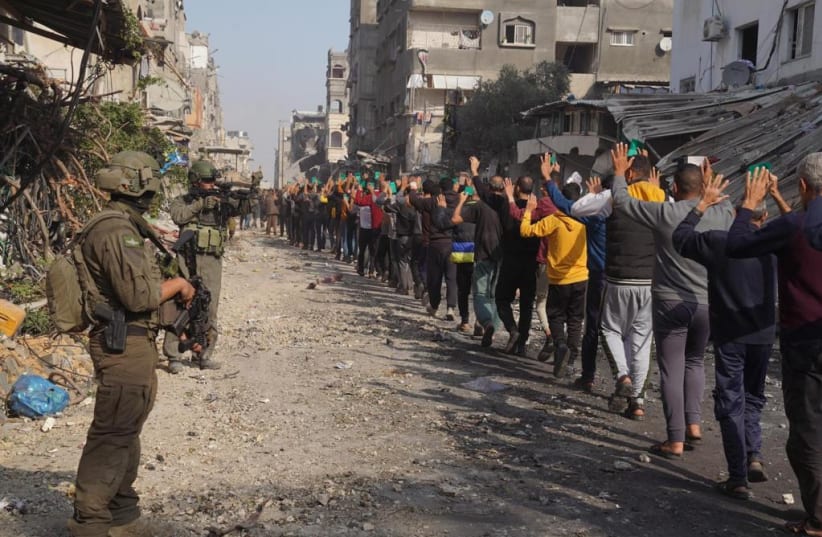
An operation near the Hamas compound in Kamal Adowan Hospital in Jabaliya came to a close Saturday, leading to arrests and seizure of weapons, according to the IDF.
In recent days, the forces of the 460th Brigade Combat Team in the 162nd Division have been operating in the area, leading fighters to arrest about 90 terrorists in the area.
Some of those arrested participated in the October 7 massacre.
The IDF reportedly destroyed terrorist infrastructure and weapon depots. Targets also revealed Kalashnikov rifles, RPGs, explosive charges, military equipment, technological equipment, as well as intelligence documents of the terrorist organization Hamas.
Shin Bet investigates deep into hospital halls
Within the hospital, the Shin Bet took field investigators and interrogated employees who admitted that there were weapons hidden in the baby ward inside incubators, which are supposed to be used to treat premature babies. The Shin Bet reported that they also retrieved weapons, classified documents, and other items in the hospital.
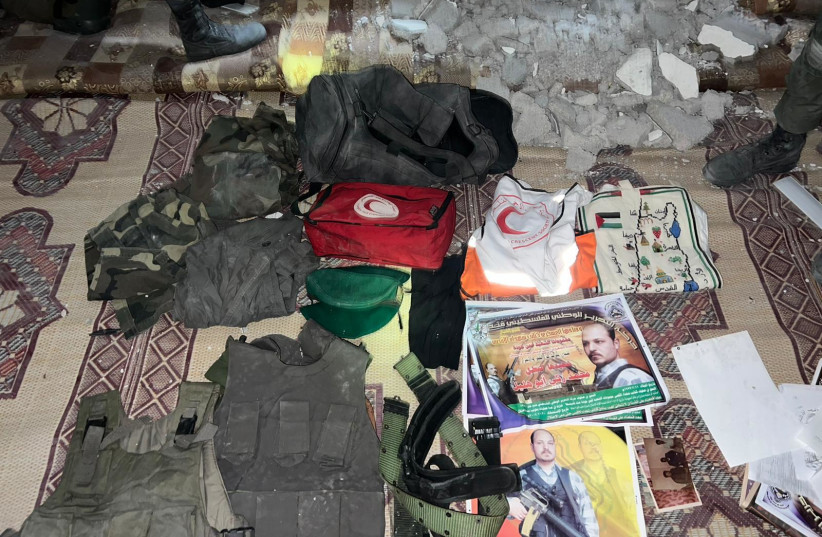
As part of the activity inside the hospital in which Shin Bet coordinators took part, the field investigators of Unit 504 interrogated the employees who admitted that there were weapons hidden in the baby ward inside incubators, which are supposed to be used to treat premature babies.
At the end of the investigation, forces from the 13th Fleet located weapons, classified documents and tactical means of communication.
Go to the full article >>Israel-Hamas war: What you need to know
- Hamas launched a massive attack on October 7, with thousands of terrorists infiltrating from the Gaza border and taking some 240 hostages into Gaza
- Over 1,200 Israelis and foreign nationals were murdered, including over 350 in the Re'im music festival and hundreds of Israeli civilians across Gaza border communities